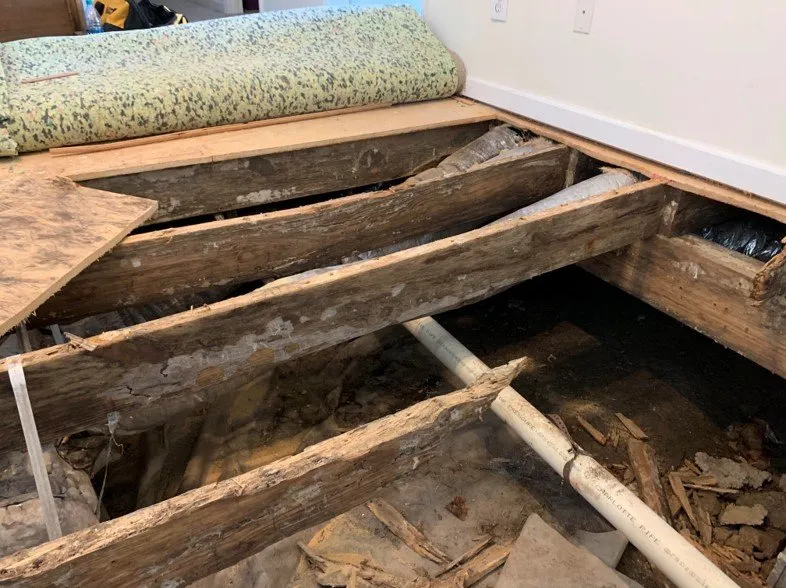Moisture in your crawl space can lead to a host of problems, from structural damage to mold growth, and even pest infestations. At Volunteer Rid-A-Pest, we specialize in identifying and addressing the various ways moisture can enter your crawl space, ensuring your home remains safe, dry, and healthy.
Crawl spaces are particularly vulnerable to moisture intrusion, especially in the Southeastern United States, where humidity levels are high and many homes suffer from inadequate ventilation. Moisture can enter your crawl space in several ways:


In many homes, fiberglass insulation is used in crawl spaces to help regulate temperature. However, when this insulation gets wet, it can do more harm than good:
Another common issue in crawl spaces is the condensation that occurs when humid air enters through foundation vents. Without proper cross-ventilation, this humid air cools as it comes into contact with your HVAC ductwork, causing it to condense and essentially “rain” within your crawl space. This added moisture exacerbates the problem, increasing the likelihood of mold, mildew, and wood decay.
At Volunteer Rid-A-Pest, we offer comprehensive solutions to address moisture issues in your crawl space:
Protect your home from the damaging effects of moisture in your crawl space. Contact Volunteer Rid-A-Pest today to schedule an inspection and learn how we can help you maintain a safe, dry, and healthy home.

With decades of experience serving our community, Volunteer Rid-A-Pest has earned a reputation for excellence in residential pest control. We are committed to delivering high-quality service that not only resolves your pest problems but also ensures your home’s long-term safety and comfort.
We understand the unique pest challenges in our area and offer solutions that work.
Our team is highly trained, knowledgeable, and dedicated to providing the best possible service.
Your satisfaction is our priority. If you're not completely happy with our service, we'll make it right.
Don’t let pests disrupt your home and compromise your family’s safety. With Volunteer Rid-A-Pest, you can trust that your home is in good hands. Contact us today to schedule a consultation and take the first step toward a pest-free home.